Do you have a question about the Samsung PN51E550D1F and is the answer not in the manual?
Provides contact phone numbers and website for Samsung customer support.
Lists the physical addresses for Samsung Electronics Canada and America customer service.
Details warranty exclusions related to static images and burn-in on the plasma display.
Explains normal operational sounds like 'cracking' and potential cell defects.
Advises on handling the TV safely, including glass care and operating temperature limits.
Highlights advanced features like 3D viewing, SMART HUB portal, and AllShare Play media access.
Details Anynet+ (HDMI-CEC) for device control and the integrated on-screen e-Manual.
Lists items included with the TV, such as remote control, batteries, and user manual.
Illustrates and lists various input cables required for connecting external devices.
Specifies the minimum distance required around the TV for adequate ventilation.
Recommends using Samsung-provided parts for stand or wall-mount installation.
Notes that actual product appearance may differ from manual illustrations.
Advises caution when touching the TV as some parts may be hot.
Identifies the components (A, B, C) required for stand assembly.
Provides step-by-step instructions and diagrams for attaching the stand to the TV.
Emphasizes safety precautions for wall or ceiling mounting to prevent injury or damage.
Recommends professional assistance for wall mount bracket installation.
Provides contact information for purchasing the optional wall mount kit.
Details standard VESA dimensions and important notes for wall mount kits.
Covers screw specifications, tightening, tilt angle, and safety during mounting.
Instructions for attaching a wall-mount from a manufacturer other than Samsung.
Instructs to plug in the power cord only after all other connections are made.
Details connecting the ANT IN jack for antenna or cable signals.
Warns about potential TV interference from radios and antenna cable handling.
Recommends HDMI for best HD picture and audio quality, connecting various digital devices.
Advises using certified, high-speed HDMI cables for optimal performance.
Explains the Audio Return Channel (ARC) feature via HDMI IN 2.
Recommends Component connection over A/V for better picture quality.
Informs about potential color mismatch between video cables and jacks.
Details connecting digital audio systems, amplifiers, and home theaters using optical cables.
Explains how to achieve 5.1 channel surround sound with external devices.
Provides instructions for connecting a PC using HDMI or HDMI to DVI cables.
Covers optimal resolution, specific port usage, and unsupported PC inputs.
States that the EX-LINK connection is intended exclusively for service purposes.
Explains how to set up the TV for network access via wired or wireless connections.
Details connecting to a wireless network, including protocols and security.
Presents three diagrams illustrating different ways to connect the TV via cable.
Specifies minimum network speed support and recommended cable types.
Guides on inserting AAA batteries correctly into the remote control.
Provides tips on remote control range, battery life, and avoiding interference.
Explains the purpose and operation of common remote control buttons.
Details the usage of buttons like Family Story, MTS, 3D, SUPPORT, P.SIZE, and CC.
Guides through the initial setup sequence upon first turning on the TV.
Instructions for selecting the on-screen menu language and home use mode.
Options for configuring network settings during initial setup or skipping.
Details the process of connecting to a wireless network during initial setup.
Details the process of connecting to a wired network during initial setup.
Explains automatic software checking and installation during initial setup.
Covers agreeing to terms of service for features like Smart Hub.
Guides selection of signal source (antenna, cable, set-top box) for Auto Program.
Details selecting Air/Cable and signal format for channel scanning.
Instructions for setting the TV's clock automatically or manually.
Final step to review and complete the initial setup process.
Explains how to access and rerun the initial setup via the System menu.
Provides instructions for turning the Store Demo mode on or off outside of setup.
Guides on switching between TV, HDMI, AV, Component, and other input sources.
Allows renaming input sources for easier identification.
Details on viewing device information and refreshing the source list.
Explains how to use MENU, TOOLS, Direction, RETURN, and EXIT buttons.
Provides a step-by-step guide to navigating and selecting options in the on-screen display.
Details how to use the TV's built-in controller for power, volume, channels, and menus.
Advises on reducing power consumption by unplugging the TV during long periods of inactivity.
Lists key Smart Hub functions: Channel management, Web Browser, Schedule Manager, Source, AllShare Play.
Describes access to online media, entertainment apps, and streaming content via Smart Hub.
Step-by-step guide for setting up a wireless network connection using DHCP.
Instructions for manually configuring IP settings for a wireless network.
Guide for setting up a wired network connection automatically via DHCP.
Instructions for manually configuring IP settings for a wired network.
Explains how to open the e-Manual using the remote's SUPPORT button or the menu.
Details the meaning of blue words, green icons, and arrow steps within the e-Manual.
Describes how to switch between the e-Manual content and the TV's OSD menu.
Explains how to use colored buttons (Try Now, Home, Position, Index, Return) in the e-Manual.
Guides on using the index feature to find specific topics and keywords.
Details how to change the position of the e-Manual display on the screen.
Addresses flickering or dimming by suggesting disabling energy-saving features.
Troubleshoots incorrect screen color and connection problems with self-diagnosis.
Recommends adjusting picture settings like Brightness for optimal screen appearance.
Diagnoses unwanted power-offs related to timer settings or energy-saving features.
Provides steps to check for issues like power light blinking or PC sleep mode.
Suggests rerunning setup or auto program to resolve channel detection issues.
Addresses TV power-on failures and lack of picture/video by checking cables and sources.
Provides steps for remote issues: batteries, sensor cleaning, and aiming.
Explains how to program a cable/set-top box remote to control the TV.
Details safe methods for cleaning the TV screen and exterior, avoiding damage.
Warns about the dangers of pulling or climbing on the TV and recommends an anti-fall device.
Guides on installing the TV-Holder kit, including attaching it to the TV and wall.
Details tying the cord securely and periodically checking connections.
Provides contact information for purchasing the optional TV-Holder Kit.
Lists display resolution, operating temperature, and humidity requirements.
Provides detailed dimensions (W x H x D) and weight for different TV models.
Includes disclaimers on design changes, power consumption, and electronics recycling.
Lists standard resolutions, horizontal/vertical frequencies, and sync polarity for PC input.
Highlights unsupported modes like interlaced and non-standard video formats.
Details supported video file extensions, containers, codecs, frame rates, and audio codecs.
Outlines limitations for video codecs like H.264, MVC, and audio codecs like WMA.
Illustrates the rear panel layout showing various input and output jacks.
Presents a table with specific dimensions for different TV models (PN51E550, PN60E550, PN64E550).
| Screen Size | 51 inches |
|---|---|
| Resolution | 1920 x 1080 |
| Display Type | Plasma |
| HDMI Ports | 3 |
| USB Ports | 2 |
| 3D | Yes |
| Smart TV | Yes |
| Built-in Wi-Fi | Yes |
| Refresh Rate | 600 Hz |
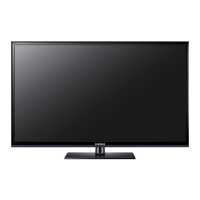

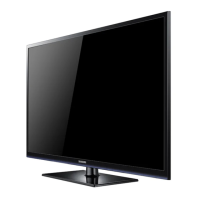

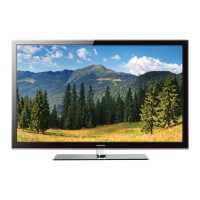
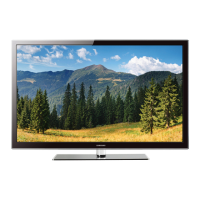
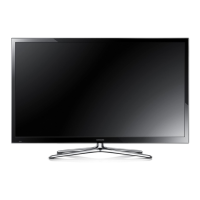
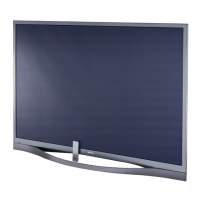
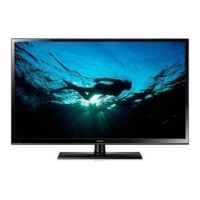


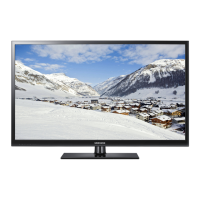
